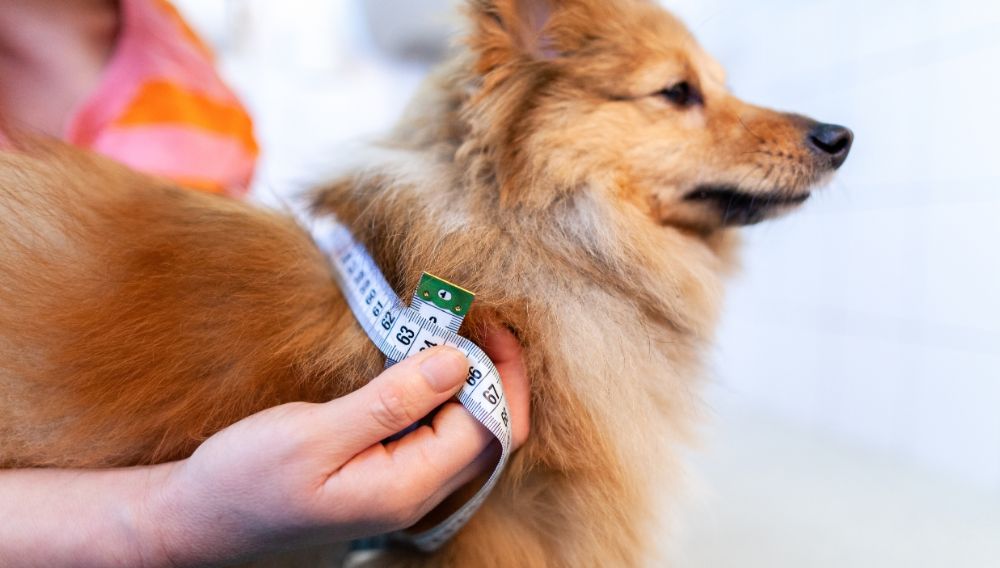
Diabetes results from insufficient insulin, the hormone that regulates blood sugar (glucose) levels. Without enough insulin, the sugar from food can build up in the bloodstream and appear in the urine.
Forms of Dog Diabetes
- Insulin-deficiency diabetes (Type I): when the dog's body isn't producing enough insulin. This is likely because the pancreas is not functioning correctly or the pancreas is damaged. This is the most common form of diabetes in dogs.
- Insulin-resistance diabetes (Type II): this occurs when the dog's body produces some insulin. However, the body's cells do not respond as they should, leaving glucose in the bloodstream. This form is rare in dogs but is most common in older, obese dogs. Female dogs can also develop type II diabetes temporarily while pregnant or in heat.
Diabetes in dogs result in excessive sugar in the bloodstream, but the body's cells that need sugar can't access it. Muscle cells and some organ cells lack the required glucose for energy. As a result, the body starts breaking down fats and proteins to use as an alternative fuel source. The high blood sugar levels cause multi-organ damage, including the kidneys, heart, eyes, nerves, and blood vessels.
Causes of Dog Diabetes
Autoimmune disorders and viral diseases may trigger diabetes by harming the pancreas cells that produce insulin. Long-term steroid use or having Cushing's disease, where the body produces too many steroids, can lead to diabetes. Chronic or repeated pancreatitis (inflammation of the pancreas) can lead to type II diabetes as it damages the pancreas.
Diabetes can affect any dog, but some have a higher risk of developing the disease than others. This is more common in middle-aged to senior dogs and in some breeds.
Middle-aged female dogs are more susceptible because of hormonal changes. The disease usually starts within a month or two of a season or 'heat'. Spaying your female dog can prevent the disease or help manage diabetes.
Symptoms of Diabetes in Dogs
Signs of diabetes in dogs include increased thirst and urination as the body tries to remove excess sugar through urine (hyperglycaemia). Dogs with diabetes may lose weight, and experience increased appetite because they can't regulate insulin and glucose levels properly.
Other more advanced canine diabetes symptoms include vomiting, lack of energy, loss of appetite, and depressed behaviour. Failure to catch these early signs and leaving the dog untreated will lead to the development of other complications. These can include cataracts, urinary tract infections, seizures, enlarged liver, kidney failure, or diabetic ketoacidosis (DKA). An untreated diabetic dog could fall into a coma and die in a matter of weeks or months.
How Would a Vet Diagnose Diabetes in Dogs?
Take your dog to see your vet immediately if you notice any of the symptoms of diabetes in dogs. Your vet will want to run some blood and urine tests to check the amount of glucose in the blood. The results will show if there's an excessive amount of sugar in your dog's body.
A blood test can also test for high liver enzymes and electrolyte imbalances, indicating diabetes. Diagnosing your dog early on allows treatments to start sooner and improves your dog's quality of life.

Diabetes in Dogs Treatment
Regular insulin therapy can help manage your dog's blood sugar levels since diabetes has no cure. People typically give these insulin injections to the dog once or twice daily for the rest of its life. You should administer these painless injections under the skin. Your vet will show you how to administer the insulin so that you're confident in doing this every day.
If you administer the injection just before mealtimes, your dog will quickly learn that food follows the injection. This will make the process easier for you both.
We recommend a well-balanced diet and feeding the same amount at the same time every day. This doesn't imply the need to purchase diabetic dog food. Instead, ensure that what your dog eats is high in fibre and low in fat. You should avoid exceeding on treats and titbits.
You'll also need to stick to a regular exercise routine, as this can also affect your dog's blood glucose levels.
Your dog should have regular check-ups with the vet to monitor your dog's weight and test blood and urine glucose levels. This will ensure that your dog's treatment is correct and they get the right amount of insulin from the injections. Too much insulin can lead to hypoglycaemia.
When the blood sugar is too low, the dog may become wobbly, confused and collapse. Finding the right insulin type, dose, and diet may take a few weeks or months, as there are various options.
Signs Your Dog with Diabetes is Dying
Diabetes is a challenging condition as it requires daily management that's both time-consuming and expensive. Over time, this condition often worsens, so what initially worked might not work later on.
Other diseases can affect your dog's response to insulin injections. If your dog gets sick, like an infection or kidney disease, it can impact their diabetes management. Insulin doses will constantly need reviewing and adjusting.
Deciding when to put a diabetic dog down is never easy, but you should always base it on your dog's quality of life. If your dog is seriously ill, not responding to insulin, and all options are exhausted, consider euthanasia. If you can't control the condition, your dog will develop serious health issues, including diabetic ketoacidosis.
DKA is a life-threatening condition, with only two-thirds of dogs surviving despite intensive care. Clinical signs of a dying diabetic dog can be vomiting, loss of appetite, weight loss, changes in breathing, and a sweet smell on their breath. They can develop hypothermia, feel cold and will slip into a coma if untreated. It can be a traumatic end to a dog's life, so euthanasia is the kindest option before they get to this point.
Your vet will be able to help you decide when the time is right to put your diabetic dog down.
Diabetes occurs when insulin levels are too low or not used properly, resulting in high glucose levels. Keeping your dog's glucose levels under control will help to minimise the risk of complications associated with diabetes. If untreated, diabetes can cause multiple health problems and be fatal. For diabetes in dogs, treatment involves insulin injections, feeding appropriate food for diabetic dogs, controlled exercise and regular glucose monitoring.
Everypaw Dog Insurance
Everypaw's Dog Insurance comes with 24/7 unlimited access to vets and vet nurses that can help with your pet's health, care, nutrition and behaviour. So you can rest assured your pup will be well looked after.
Content provided from Vetstream's Vetlexicon Canis - www.vetstream.com/treat/canis
Vetlexicon is the world’s largest peer-reviewed online clinical reference source. All our content is written and peer-reviewed by over 1,000 of the world’s leading veterinarians, ensuring relevance, accuracy and quality.
- Bruyette D & Cook A K (online) Diabetes mellitus. In: Vetlexicon Canis. Vetstream Ltd, UK. Website: https://www.vetlexicon.com/treat/canis/diseases/diabetes-mellitus
- Vetstream Ltd (online) Diabetes mellitus. In: Vetlexicon Canis. Vetstream Ltd, UK. Website: https://www.vetlexicon.com/treat/canis/client-information/diabetes-mellitus
- Vetstream Ltd & Fleeman L (online) Diabetes monitoring. In: Vetlexicon Canis. Vetstream Ltd, UK. Website: https://www.vetlexicon.com/treat/canis/client-information/diabetes-mellitus
- Vetstream Ltd & Bruyette D (online) Diabetic ketoacidosis (DKA). In: Vetlexicon Canis. Vetstream Ltd, UK. Website: https://www.vetlexicon.com/treat/canis/client-information/diabetic-ketoacidosis-(dka)
- Bruyette D & Cook A K (online) Diabetic ketoacidosis in dogs. In: Vetlexicon Canis. Vetstream Ltd, UK. Website: https://www.vetlexicon.com/treat/canis/diseases/diabetic-ketoacidosis